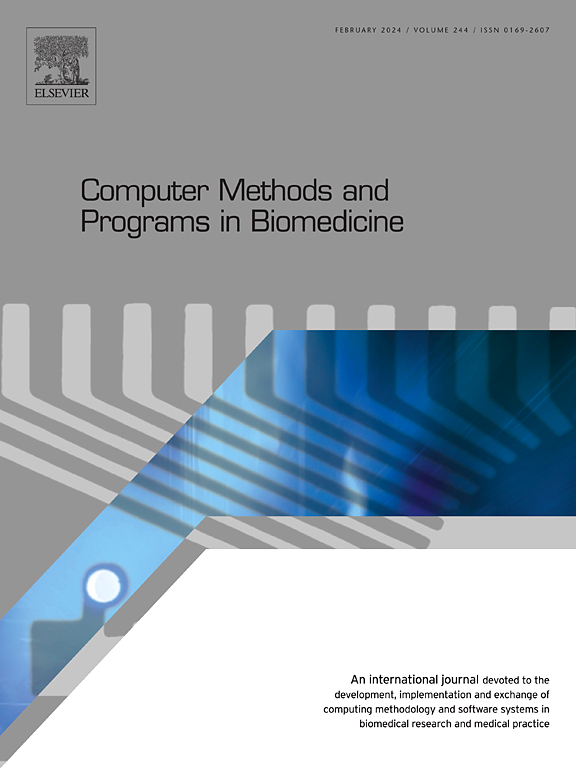Understanding deep learning models for Length of Stay prediction on critically ill patients through latent space visualization
IF 4.9
2区 医学
Q1 COMPUTER SCIENCE, INTERDISCIPLINARY APPLICATIONS
引用次数: 0
Abstract
Background and Objective:
Continuous, real-time monitoring of Length of Stay (LoS) for critically ill patients in Intensive Care Units (ICUs) is essential for anticipating patient needs, reduce the risk of adverse events, optimize resource allocation, plan incoming patients, and improve overall care. While previous research has focused primarily on predicting LoS, less attention has been given to how these prediction systems can be used by non-machine learning experts in real hospital environments for capacity planning.
Methods:
In this work, we predict remaining ICU LoS using data from the Amsterdam University Medical Center dataset, which is the first freely available European critical care dataset and shows higher variability in LoS compared to U.S. datasets. We applied state-of-the-art sequence-to-sequence deep learning models – Long Short-Term Memory Networks, Gated Recurrent Units, Temporal Convolutional Networks with and without attention, and Transformer models – on 271 input features extracted from 20,481 ICU stays. Additionally, the latent spaces of these models were extracted, projected onto a 2D space and explored interactively to intuitively understand how the models learn patterns from the clinical data over time.
Results:
The TCN model with attention (TCN-att) returned the best performance, reducing the prediction error by 2.24 days from a MAE of 6.94 days to a MAE of 4.70 days. Latent space analysis revealed that with just 5–6 h of patient data, the models could clearly differentiate between short ( days) and long ( days) ICU stays, identify a patient cluster at risk of in-hospital mortality, and more.
Conclusion:
Beyond reporting prediction error metrics, this study shows how an interactive dashboard can be used to gain insights into the inner workings of complex algorithms and how these can be integrated into clinical decision support systems. This approach allows for real-time intuitive understanding of how models learn and how patient predictions evolve, facilitating their use in real hospital environments.
基于潜在空间可视化的危重病人住院时间预测深度学习模型研究
背景与目的:对重症监护病房(icu)危重患者的住院时间(LoS)进行持续、实时监测,对于预测患者需求、降低不良事件风险、优化资源分配、计划入院患者以及改善整体护理至关重要。虽然以前的研究主要集中在预测LoS上,但很少关注这些预测系统如何被非机器学习专家在真实医院环境中用于容量规划。方法:在这项工作中,我们使用来自阿姆斯特丹大学医学中心数据集的数据预测剩余的ICU LoS,这是第一个免费提供的欧洲重症监护数据集,与美国数据集相比,LoS显示出更高的可变性。我们应用了最先进的序列到序列深度学习模型——长短期记忆网络、门控循环单元、有和没有注意的时间卷积网络以及变压器模型——对从20,481个ICU住院病人中提取的271个输入特征进行了研究。此外,这些模型的潜在空间被提取出来,投影到二维空间,并进行交互式探索,以直观地了解模型如何随着时间的推移从临床数据中学习模式。结果:加注意的TCN模型(TCN-att)的预测效果最好,预测误差从6.94天减少到4.70天,减少了2.24天。潜在空间分析显示,只需5-6小时的患者数据,模型就可以清楚地区分短期(0<;LoS≤3天)和长期(7≤LoS<;+∞天)ICU住院时间,识别有院内死亡风险的患者群等。结论:除了报告预测误差指标外,本研究还展示了如何使用交互式仪表板来深入了解复杂算法的内部工作原理,以及如何将其集成到临床决策支持系统中。这种方法允许实时直观地了解模型如何学习以及患者预测如何演变,从而促进它们在真实医院环境中的使用。
本文章由计算机程序翻译,如有差异,请以英文原文为准。
求助全文
约1分钟内获得全文
求助全文
来源期刊

Computer methods and programs in biomedicine
工程技术-工程:生物医学
CiteScore
12.30
自引率
6.60%
发文量
601
审稿时长
135 days
期刊介绍:
To encourage the development of formal computing methods, and their application in biomedical research and medical practice, by illustration of fundamental principles in biomedical informatics research; to stimulate basic research into application software design; to report the state of research of biomedical information processing projects; to report new computer methodologies applied in biomedical areas; the eventual distribution of demonstrable software to avoid duplication of effort; to provide a forum for discussion and improvement of existing software; to optimize contact between national organizations and regional user groups by promoting an international exchange of information on formal methods, standards and software in biomedicine.
Computer Methods and Programs in Biomedicine covers computing methodology and software systems derived from computing science for implementation in all aspects of biomedical research and medical practice. It is designed to serve: biochemists; biologists; geneticists; immunologists; neuroscientists; pharmacologists; toxicologists; clinicians; epidemiologists; psychiatrists; psychologists; cardiologists; chemists; (radio)physicists; computer scientists; programmers and systems analysts; biomedical, clinical, electrical and other engineers; teachers of medical informatics and users of educational software.
 求助内容:
求助内容: 应助结果提醒方式:
应助结果提醒方式:


